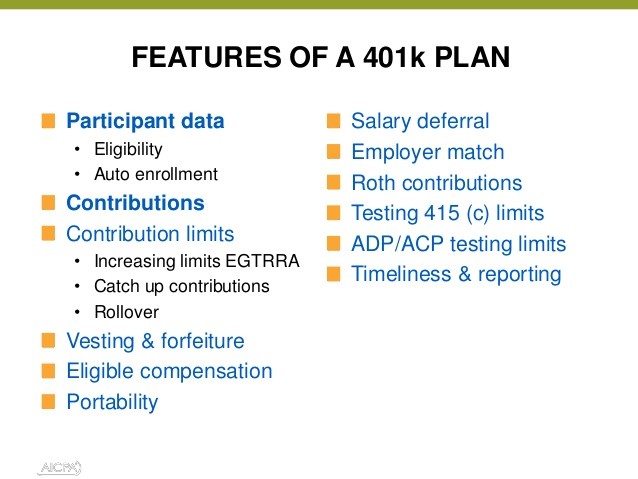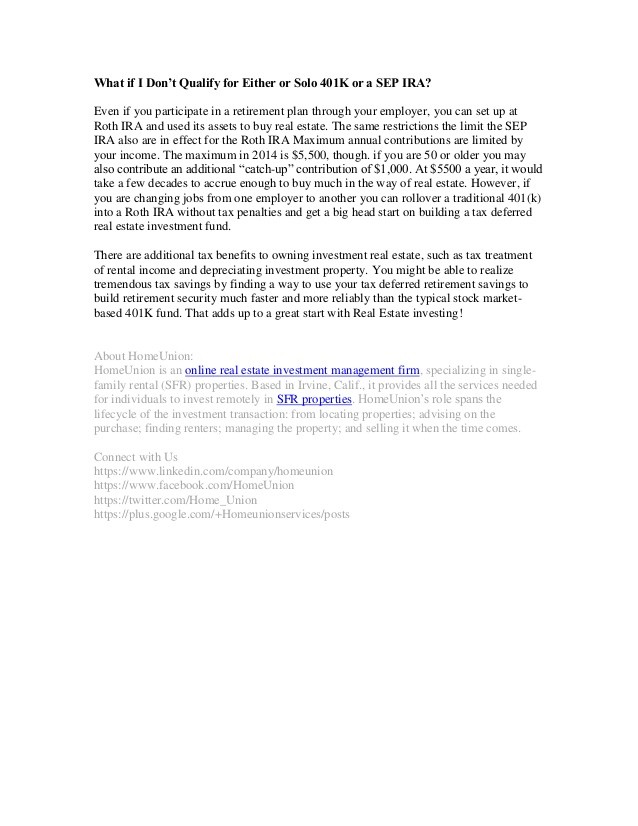Investing For Success In Your 401k Plan
Post on: 18 Октябрь, 2015 No Comment

By Dan Weil • Bankrate.com
Investing » Investing for success in your 401(k) plan
If you work at a company providing a 401(k) plan, it behooves you to understand your fund options. Most plans offer three types of investment alternatives: target-date mutual funds, actively managed mutual funds and index funds.
The funds you choose will depend on your investment philosophy, your risk tolerance and how much time you’re willing to spend on allocating your assets.
With target-date funds, you select the fund with the date closest to your planned retirement. Target-date funds are made up of other mutual funds — a combination of stock funds, bond funds and sometimes funds with alternative assets.
In addition, you likely have a choice of stock and bond funds that are indexed, meaning their holdings simply mimic a market benchmark such as the Standard & Poor’s 500 index. And you’ll also be able to select from funds that are actively managed, meaning the fund manager buys or sells stocks and bonds as he or she sees fit.
Target-date funds
The idea behind target funds is that they will take a more aggressive stance in their early years, relying more heavily on stocks than bonds. And then the funds turn more conservative close to the target date, as the fund holders approach retirement. That means the fund investments shift to more bonds than stocks.
These are most appropriate for investment novices, who don’t have the time or inclination to greatly increase their expertise.
For investors who don’t have knowledge and time, target-date funds are the best option, because you can be so hands-off, says Christine Benz, director of personal finance for Morningstar, a Chicago-based investment research firm. The problem is that not all target funds are good. You do need to do some due diligence before opting for it.
During the stock market plunge of 2008-2009, some of the funds that were close to their target date were weighted heavily in equities and plunged — not a welcome development for fund holders hoping to retire soon.
To add to the confusion, different target-date funds with the same date can pursue vastly divergent investment strategies.

For instance, some target-date funds shift the mix of investments going up to the retirement date, while others invest through that date and into retirement years. The way the shift occurs is known as the fund’s glide path.
A 2014 study by Morningstar compared the equity allocations of to target-date funds with through target-date funds with a hypothetical 60-year glide path.
- To glide paths had average equity weightings of 57 percent, though they ranged from 41 percent to 70 percent.
- Through glide paths had average equity weightings of 63 percent, with a range of 49 percent to 73 percent.
Plus, the study found that target-date funds with a looming retirement date showed more variability in their exposure to stocks. For instance, equities in funds with a target-date year of 2015 ranged from 25 percent to 78 percent. Target-date 2045 funds held a proportion of equities ranging from 80 percent to 100 percent.
Target-date funds look like a mess, says Mick Heyman, an independent financial adviser in San Diego. They just throw everything in the hopper. It’s a mishmash. The ones I’ve looked at seemed like they had too much in them. And you won’t know for 30 years whether people will hit the target. I’d rather have control.
Fees also have been an issue in the past, though not so much now, Benz says. The average annual expense ratio for funds in Morningstar’s 2011-2015 target-date category totals 0.46 percent. And the average expense ratio for funds in Morningstar’s 2046-2050 target-date category is 0.52 percent. The higher fee for the second category reflects a heavier weighting in stocks.














